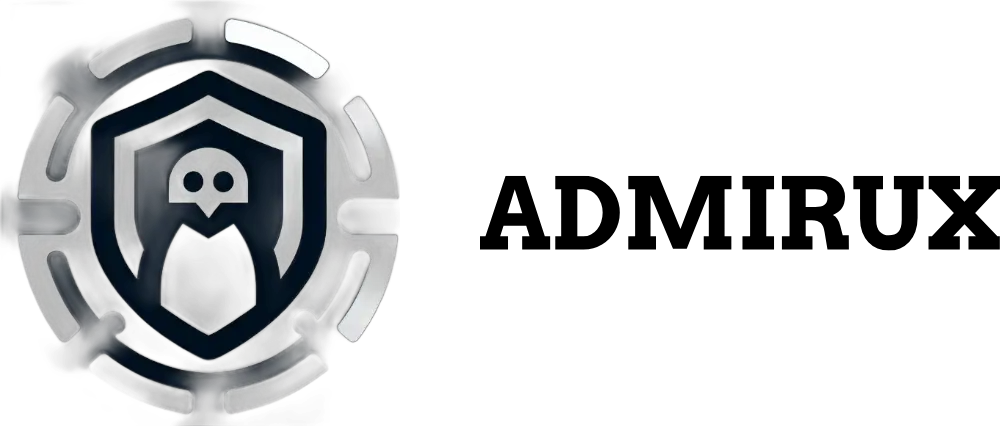Building a Robust Cybersecurity Strategy: Comparing NIST, ISO, and Cloud Security Frameworks
Introduction
In today’s fast-paced and interconnected digital world, cybersecurity has become a paramount concern for organizations of every size and industry. As cyber threats evolve in complexity and scale, the imperative for robust security frameworks, benchmarks, and secure configuration guides has intensified. With a myriad of standards and frameworks available, three stand out for their comprehensive approaches: the NIST Cybersecurity Framework (CSF), ISO standards, and various cloud-specific frameworks. These tools offer organizations the necessary guidance to protect their digital assets, yet they differ significantly in scope, approach, and practical application.
This blog post provides a comparative analysis of the NIST Cybersecurity Framework, ISO standards, and cloud-specific frameworks, benchmarks, and secure configuration guides. The aim is to help organizations understand the distinct features of each and how these frameworks can be integrated to form a holistic and resilient cybersecurity strategy.
Overview of the NIST Cybersecurity Framework
The NIST Cybersecurity Framework, established by the National Institute of Standards and Technology (NIST), is a voluntary, flexible framework designed to assist U.S. private sector organizations in improving their ability to prevent, detect, and respond to cyber-attacks. The framework is organized around five core functions that serve as the foundation of effective cybersecurity risk management:
- Identify: Develop a deep understanding of organizational systems, assets, data, and capabilities to manage cybersecurity risks effectively.
- Protect: Implement appropriate safeguards to ensure the ongoing delivery of critical infrastructure services.
- Detect: Establish and execute activities to identify the occurrence of cybersecurity events.
- Respond: Take decisive actions in response to detected cybersecurity incidents.
- Recover: Implement strategies for resilience and restore capabilities or services that were impaired due to a cybersecurity incident.
The NIST CSF is lauded for its flexibility, enabling organizations to tailor the framework to their specific needs, regardless of their size, industry, or risk profile.
Overview of ISO Standards
The International Organization for Standardization (ISO) has developed a series of internationally recognized standards related to information security, with the ISO/IEC 27000 series being the most prominent. The ISO/IEC 27001 standard, in particular, provides a comprehensive specification for an information security management system (ISMS), offering a structured methodology for managing sensitive company information.
Key components of the ISO/IEC 27001 standard include:
- Context of the Organization: Understanding internal and external factors that can influence the ISMS.
- Leadership: Ensuring top management demonstrates a commitment to the ISMS.
- Planning: Identifying risks and opportunities and developing plans to address them.
- Support: Allocating necessary resources to support the ISMS effectively.
- Operation: Establishing and managing the ISMS, including conducting risk assessments and implementing risk treatments.
- Performance Evaluation: Monitoring, measuring, and evaluating the performance of the ISMS.
- Improvement: Continuously enhancing the ISMS through iterative processes.
ISO standards are widely adopted by organizations aiming to demonstrate their adherence to global best practices in information security management.
Cloud Frameworks, Benchmarks, and Secure Configuration Guides
As cloud computing has become a cornerstone of modern IT infrastructure, the need for cloud-specific security frameworks, benchmarks, and secure configuration guides has risen correspondingly. These frameworks are designed to address the distinct security challenges presented by cloud environments. Among the most notable are:
CIS Benchmarks: Developed by the Center for Internet Security (CIS), these benchmarks provide best practice configuration guides for securing IT systems, including cloud environments. They cover a broad spectrum of technologies, offering prescriptive guidance for securing them effectively.
Cloud Security Alliance (CSA) Cloud Controls Matrix (CCM): The CCM is a cybersecurity control framework specifically designed for cloud computing. It provides fundamental security principles to assist cloud vendors and prospective customers in assessing the overall security risk of a cloud provider.
Azure Security Benchmark and AWS Well-Architected Framework: These frameworks, offered by Microsoft Azure and Amazon Web Services (AWS), respectively, provide security benchmarks and best practices for securing cloud environments. The Azure Security Benchmark delivers recommendations tailored to securing Azure services, while the AWS Well-Architected Framework offers guidance on building secure, high-performing, resilient, and efficient cloud infrastructures.
These cloud-specific frameworks and guides play a crucial role in ensuring that cloud environments remain secure, compliant, and resilient in the face of evolving threats.
Comparative Analysis
Scope and Flexibility
The NIST Cybersecurity Framework is characterized by its broad applicability and flexibility. It is designed to be adaptable to a wide range of organizations, regardless of industry or size, providing a comprehensive approach to managing cybersecurity risks. However, it does not prescribe specific controls or technologies, allowing organizations to tailor the framework to their specific contexts.
ISO standards, particularly ISO/IEC 27001, are more prescriptive and structured. They require organizations to establish, implement, maintain, and continually improve an information security management system. These standards set specific requirements that organizations must meet to achieve certification, making them more rigid compared to the NIST CSF.
Cloud frameworks and benchmarks, such as the CIS Benchmarks and CSA CCM, are more focused and technical. They offer detailed, technology-specific guidance crucial for securing cloud environments. These frameworks often necessitate a deep understanding of specific cloud technologies and are less flexible than the NIST CSF, as they cater to the unique needs of cloud infrastructure.
Global Recognition and Adoption
ISO standards, particularly ISO/IEC 27001, enjoy global recognition and widespread adoption. Certification to ISO standards is often seen as a mark of credibility, and in some cases, it is required by customers, partners, or regulators. The international acceptance of ISO standards makes them an integral part of many organizations’ cybersecurity strategies, especially those operating in global markets.
The NIST Cybersecurity Framework, while primarily developed for U.S. organizations, has also gained international recognition. It is particularly well-regarded in sectors critical to national security, such as energy, finance, and healthcare.
Cloud frameworks and benchmarks are gaining momentum as cloud adoption increases worldwide. CIS Benchmarks and the CSA CCM are widely recognized within the industry, especially among organizations that heavily rely on cloud infrastructure. However, these frameworks are often used in conjunction with other standards, such as ISO/IEC 27001 or the NIST CSF, rather than as standalone solutions.
Industry-Specific Application
The NIST Cybersecurity Framework is designed to be industry-agnostic, making it applicable across various sectors. However, it is particularly well-suited for critical infrastructure sectors, such as energy, finance, and healthcare, where cybersecurity is of paramount importance.
ISO standards are also industry-agnostic but are commonly adopted by organizations in industries where data protection and information security are critical, such as finance, healthcare, and manufacturing. The structured nature of ISO standards makes them ideal for organizations that require a formalized approach to information security.
Cloud frameworks and benchmarks are most relevant to organizations that use cloud services extensively. The CIS Benchmarks and CSA CCM, for example, are particularly useful for organizations that need to secure cloud environments or assess the security of their cloud service providers.
Implementation and Certification
Implementing the NIST Cybersecurity Framework is a relatively flexible process, as the framework does not require formal certification. Organizations can self-assess their cybersecurity posture using the framework’s guidelines and improve their practices over time.
ISO/IEC 27001, on the other hand, involves a more rigorous implementation process, as organizations must meet specific requirements to achieve certification. This process often involves a significant investment of time and resources, but the certification provides a tangible demonstration of an organization’s commitment to information security.
Cloud frameworks and benchmarks do not typically involve formal certification. However, organizations can use these tools to assess their cloud security posture and ensure they are following industry best practices. Some cloud service providers offer their own certifications, such as AWS Certified Security, which can complement these frameworks.
Integration and Complementarity
While the NIST Cybersecurity Framework, ISO standards, and cloud frameworks serve different purposes, they can be highly complementary when integrated into a comprehensive cybersecurity strategy. Organizations can leverage the broad, flexible approach of the NIST CSF as a foundation, utilize ISO/IEC 27001 to add structure and rigor to their information security management, and apply cloud-specific frameworks like CIS Benchmarks to address the unique challenges of cloud environments.
For example, an organization might use the NIST CSF to develop a high-level understanding of its cybersecurity risks and establish a baseline for security practices. Then, it could implement ISO/IEC 27001 to formalize its information security management system and achieve certification, providing assurance to stakeholders. Finally, the organization could apply CIS Benchmarks to secure its cloud infrastructure, ensuring that its cloud services are configured according to industry best practices.
Conclusion
In the complex and ever-changing world of cybersecurity, no single framework or standard can address all of an organization’s needs. The NIST Cybersecurity Framework, ISO standards, and cloud frameworks, benchmarks, and secure configuration guides each offer unique strengths that can be leveraged to build a robust cybersecurity program.
The NIST CSF provides a flexible, high-level approach that can be tailored to any organization’s needs, while ISO standards offer a more structured, prescriptive framework that is globally recognized and often required for certification. Cloud frameworks and benchmarks, such as CIS Benchmarks and CSA CCM, provide detailed guidance for securing cloud environments, addressing the specific challenges posed by cloud computing.
By understanding the differences and complementarities between these frameworks, organizations can create a comprehensive cybersecurity strategy that addresses their unique risks and requirements, ensuring that they are well-prepared to defend against the ever-evolving threat landscape.
Share via:

